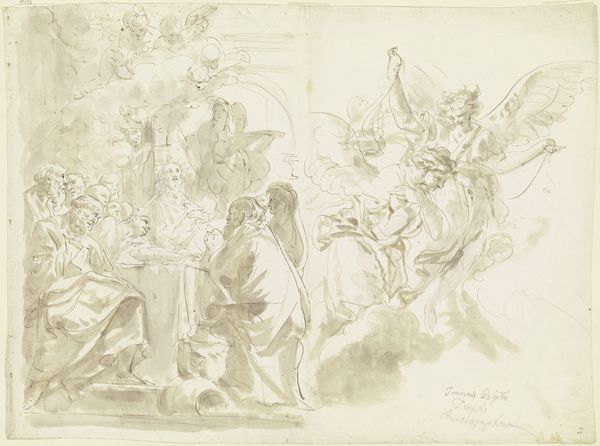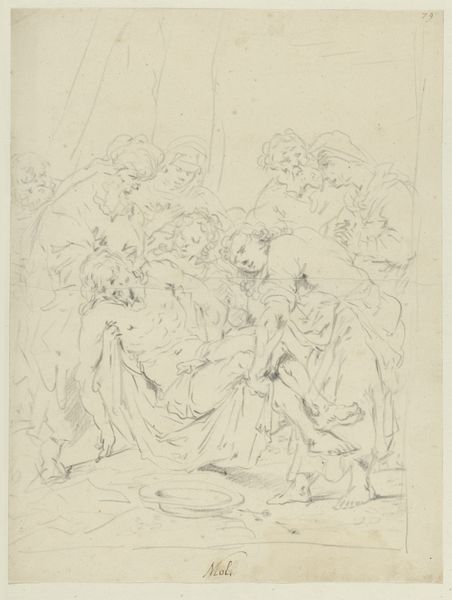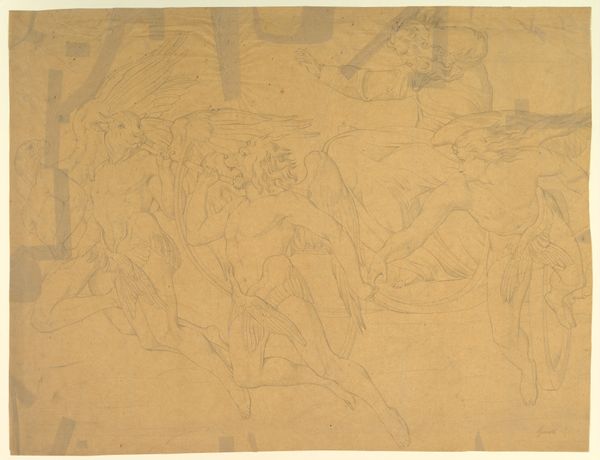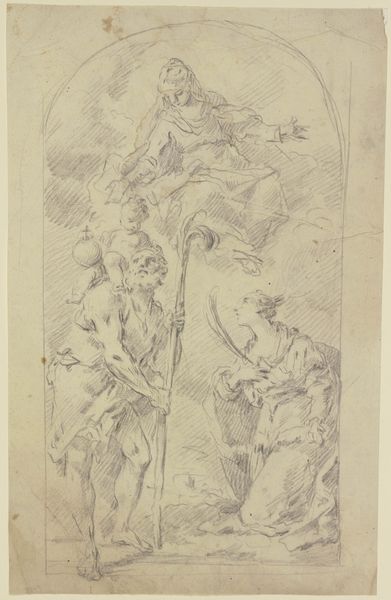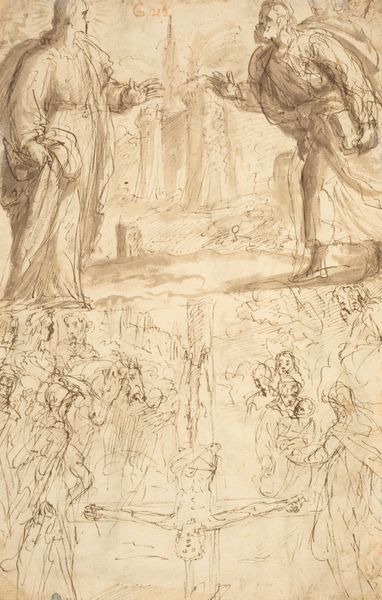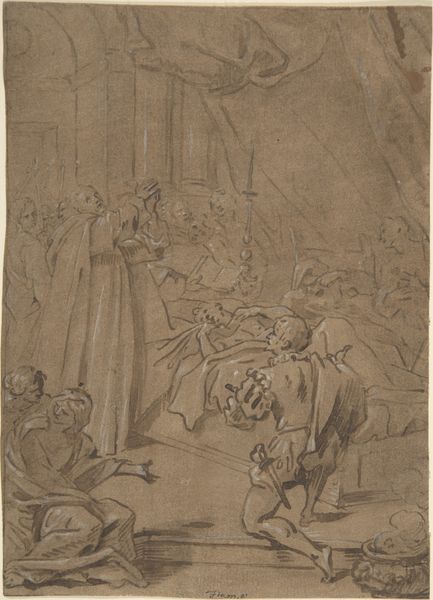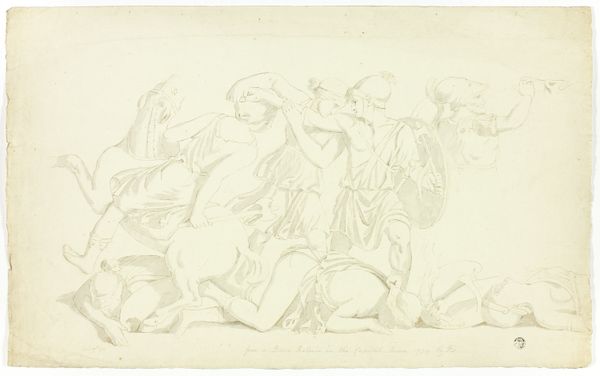
drawing, print, pencil
#
drawing
# print
#
pencil sketch
#
landscape
#
figuration
#
pencil
#
history-painting
#
northern-renaissance
Dimensions: 17 3/8 x 20 3/4 in. (44.1 x 52.7 cm)
Copyright: Public Domain
Curator: "The Lamentation," a pencil drawing by Johann Friedrich Overbeck, dating from around 1840. It’s housed at the Metropolitan Museum of Art. It feels almost ethereal, a ghostly vision rendered in delicate lines. I'm intrigued by its understated approach. What stands out to you? Editor: The interesting thing, for me, is its existence as a drawing, almost like a blueprint for a larger work perhaps, given its classical subject matter. I wonder about Overbeck's choice of pencil, a relatively humble material, for such a profound scene. Why not oil, or even fresco? Curator: Precisely! Pencil allows for a specific kind of mass production. Drawings, especially in this period, were easily reproducible as prints and were key to circulating and standardizing religious iconography. Consider, what does this say about the accessibility and democratization of religious art in the 19th century, and how might that differ from the artistic and cultural context surrounding, say, a Renaissance altarpiece? Editor: That's interesting; I never considered its accessibility in terms of its reproducibility. Does that shift the understanding of the artwork itself – less as a singular masterpiece and more as a readily available commodity? Curator: Yes. Overbeck's choice moves this work out of the sphere of purely devotional objects. It becomes a widely disseminated image, consumed and reproduced by a broad audience. Look closely – can you discern a sense of idealized beauty but also a practical, almost instructional, aspect in its clear lines and narrative composition? What materials, and production means are important to religious imagery? Editor: It's almost like a piece of sheet music, intended for broad distribution and interpretation. I had focused so much on its aesthetic qualities and missed its role within the social and economic fabric of the time. Curator: Exactly. Understanding art through its materiality reveals the intricate connections between artistic practice, social conditions, and the prevailing modes of production. Next time you see a "simple" pencil drawing, ask yourself: What kind of work went into it? Editor: I will certainly remember that!
Comments
No comments
Be the first to comment and join the conversation on the ultimate creative platform.


